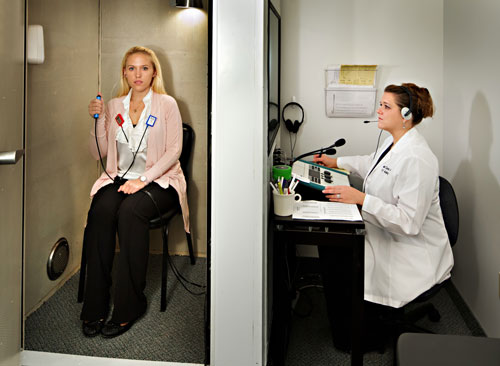Hearing Loss Treatment
So, how do we hear?
The ear can be divided into three parts leading up to the brain – the outer ear, middle ear and the inner ear.
The outer ear consists of the ear canal and eardrum. Sound travels down the ear canal, causing the eardrum to vibrate. The eardrum is also known as the tympanic membrane.
The middle ear is a space behind the eardrum that contains three small bones called ossicles. This chain of tiny bones known as the hammer, anvil and stirrup (or malleus, incus and stapes) are connected to the eardrum at one end and to an opening to the inner ear at the other end. Vibrations from the eardrum cause the ossicles to vibrate which, in turn, creates movement of the fluid in the inner ear.
Movement of the fluid in the inner ear, or cochlea, causes changes in tiny structures called hair cells. This movement of the hair cells sends electric signals from the inner ear up the auditory nerve (also known as the hearing nerve) to the brain.
The brain then interprets these electrical signals as sound.
Types of Hearing Loss
Anyone can have hearing loss. If you do, you’re not alone. In fact, you’re in the company of nearly 40 million Americans. A hearing evaluation must be completed in order for our doctors to determine the type and severity of hearing loss and therefore make appropriate recommendations.
In general terms, there are two types of hearing loss, conductive and sensorineural. A combination of both is also seen as a mixed hearing loss.
- Conductive Hearing Loss - Conductive hearing loss is due to a breakdown in the outer or middle ear components. A conductive hearing loss can be the result of ear wax buildup, middle ear fluid or disruption of the middle ear bones.
- Sensorineural Hearing Loss - Sensorineural hearing loss results from inner ear or auditory nerve dysfunction. Some causes of sensorineural hearing loss include noise exposure, aging, family history, some medications, disease or head trauma.
- Mixed Hearing Loss - Mixed hearing loss is a combination of both middle ear (conductive) and inner ear (sensorineural) hearing loss.
What’s the good news?
The good news is there are effective ways to manage hearing loss. People with hearing loss live active, fulfilling lives. It doesn’t have to stop you from doing the things you love or enjoying the company of people you love. The secret is taking the first step, call our office and schedule a complimentary consultation with one of our doctors.
Nardelli Audiology provides comprehensive hearing evaluations and tinnitus (ringing-in-the ear) evaluations. We offer individual solutions considering both lifestyle as well as budget to treat tinnitus and hearing loss.

Request a Call Back
Contact your neighborhood doctors for hearing health care today to set up an appointment with an audiology & hearing healthcare professional to discuss your hearing health, hearing aids, and the best way to treat your hearing loss.
